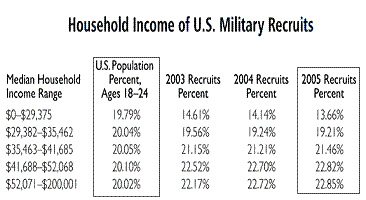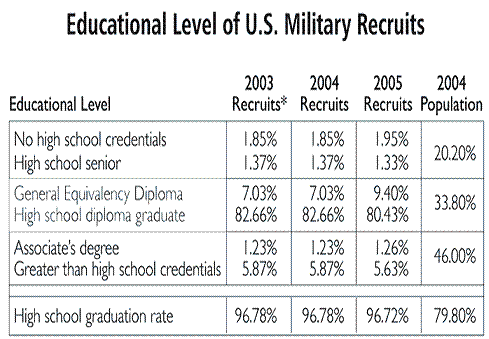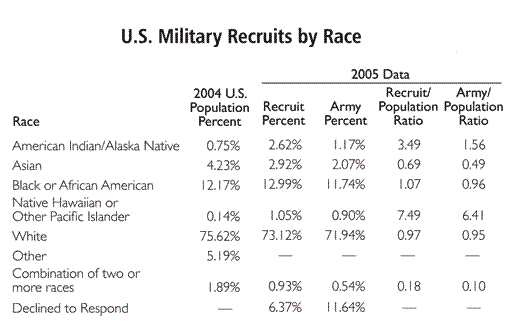Who Are the Recruits?
Income
Like their peers in 1999 and 2003, recruits in 2004 and 2005 came primarily from middle-class areas. Poor areas are proportionally underrepresented in the wartime years (2003–2005).
Education
Given the nature of the military rank structure, most enlisted recruits do not have a college education or degree. Members of the armed forces with higher education are more often commissioned officers (lieutenant and above). In 2004, 92.1 percent of active-duty officer accessions held baccalaureate degrees or higher.
While the military has changed its policies to allow flexibility in recruiting standards, it has certainly not abandoned them. The current guidelines allow each force the flexibility to accept recruits who satisfy only one criterion: either a high school diploma or an above-average score on the AFQT, which is a standard equal to or exceeding the general youth population.
Race
Conclusion
With regard to income, education, race, and regional background, the all-volunteer force is representative of our nation and meets standards set by Congress and the Department of Defense. In contrast to the patronizing slanders of antiwar critics, recruit quality is increasing as the war in Iraq continues. Although recent recruiting goals have been difficult to meet, reenlistment is strong and recruit quality remains high. No evidence supports arguments for reinstating the draft or altering recruiting policies to achieve more equitable representation.
Who Are the Recruits? The Demographic Characteristics of U.S. Military Enlistment, 2003–2005
by Tim Kane, Ph.D.
Center for Data Analysis Report #06-09
